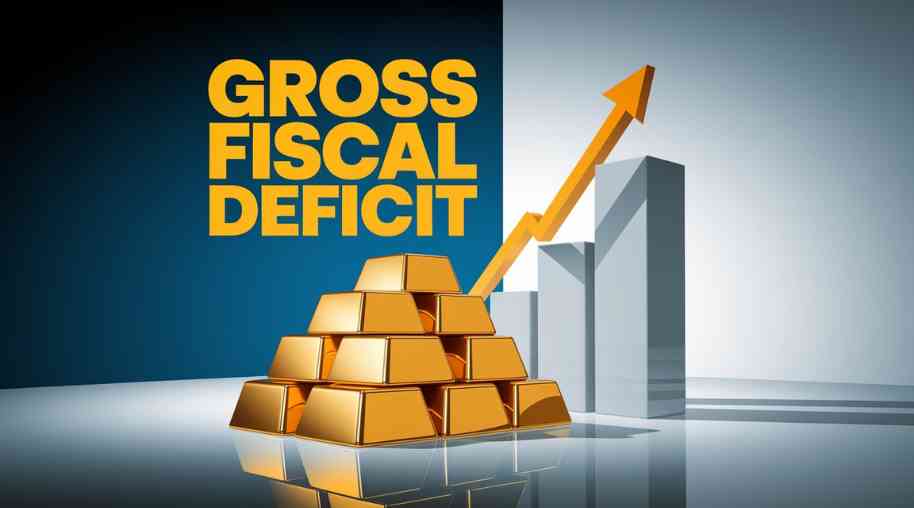GFD Full Form-Gross Fiscal Deficit
by Shashi Gaherwar
0 2023
Gross Fiscal Deficit: Balancing Economic Growth and Stability
Gross Fiscal Deficit (GFD) is a key economic indicator that measures the shortfall between a government's total expenditure and its total revenue, excluding borrowings. It reflects the extent to which a government relies on borrowing to meet its expenses. A high fiscal deficit can signal economic challenges, while a controlled deficit can contribute to sustainable growth.

Understanding Gross Fiscal Deficit
Gross Fiscal Deficit represents the total borrowing requirement of a government within a specific period, usually a financial year. It highlights the gap between government spending and revenue generation.
The formula for GFD is:
GFD = Total Expenditure – (Revenue Receipts + Non-Debt Capital Receipts)
Components of GFD:
- Total Expenditure: Government spending on infrastructure, defense, social welfare, and administrative costs.
- Revenue Receipts: Income from taxes, duties, and non-tax revenues.
- Non-Debt Capital Receipts: Revenue from disinvestment, asset sales, and other non-loan sources.
Causes of Gross Fiscal Deficit
Several factors contribute to a country's fiscal deficit, including:
- Excessive Government Spending: High investment in subsidies, welfare programs, and infrastructure.
- Low Revenue Collection: Inefficient tax collection and weak economic performance leading to reduced revenue.
- High Interest Payments: Servicing existing public debt increases fiscal burden.
- Economic Slowdown: Reduced business activity lowers tax revenues, widening the deficit.
- Policy Decisions: Expansionary fiscal policies aimed at boosting growth can temporarily increase deficits.
Effects of Gross Fiscal Deficit
Positive Effects:
- Stimulating Economic Growth: Increased government spending can drive demand and employment.
- Infrastructure Development: Higher fiscal deficit often supports public infrastructure projects.
- Welfare Benefits: Governments can invest in education, healthcare, and social security.
Negative Effects:
- Inflationary Pressures: Excessive borrowing can lead to higher money supply and inflation.
- Higher Interest Rates: Increased borrowing raises interest rates, making credit expensive.
- Rising Public Debt: Persistent deficits result in mounting debt, affecting financial stability.
- Crowding Out Effect: Government borrowing reduces funds available for private sector investment.
Gross Fiscal Deficit vs. Revenue Deficit
- Gross Fiscal Deficit: Shortfall between total expenditure and total revenue, including borrowing borrowing, with broader economic implications.
- Revenue Deficit: Difference between revenue expenditure and revenue receipts, focusing on inefficient revenue generation.
Fiscal Deficit Trends in Major Economies
Different economies manage their fiscal deficits based on economic conditions and policy decisions:
- United States: Frequently runs fiscal deficits due to high public spending on defense and social programs.
- India: Focuses on reducing fiscal deficit through improved tax collection and privatization.
- European Union: Member countries follow strict deficit limits to maintain financial discipline.
- China: Uses fiscal deficit strategically for infrastructure and economic growth.
Challenges in Reducing Gross Fiscal Deficit
- Balancing Growth and Fiscal Discipline: Governments must manage spending while ensuring economic development.
- Revenue Collection Issues: Tax evasion and inefficiencies reduce government revenue.
- Managing Debt Servicing: Interest payments on existing debt consume a large portion of revenue.
- Political Pressures: Populist policies may lead to unsustainable fiscal deficits.
- Global Economic Conditions: External factors like oil prices and trade disruptions impact fiscal health.
Strategies to Control Fiscal Deficit
Governments and financial institutions implement various measures to reduce fiscal deficit:
- Enhancing Revenue Collection: Strengthening tax compliance and expanding the tax base.
- Reducing Unnecessary Expenditures: Cutting wasteful government spending and subsidies.
- Privatization and Disinvestment: Selling public sector assets to generate revenue.
- Encouraging Economic Growth: Promoting industries that increase tax revenues.
- Debt Management Strategies: Refinancing debt to reduce interest burden.
Gross Fiscal Deficit is a critical economic metric that influences a nation's financial health and development. While some level of deficit is necessary for growth, excessive reliance on borrowing can lead to financial instability. Effective fiscal policies, strong revenue collection, and prudent expenditure management are essential for maintaining a sustainable deficit level. Governments must strike a balance between spending and fiscal discipline to ensure long-term economic prosperity.
Further Learning Resources
If you’re passionate about building a successful blogging website, check out this helpful guide at Coding Tag – How to Start a Successful Blog. It offers practical steps and expert tips to kickstart your blogging journey!
For dedicated UPSC exam preparation, we highly recommend visiting www.iasmania.com. It offers well-structured resources, current affairs, and subject-wise notes tailored specifically for aspirants. Start your journey today!

Share:








Comments
Waiting for your comments